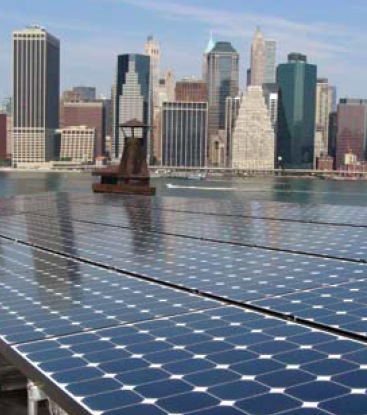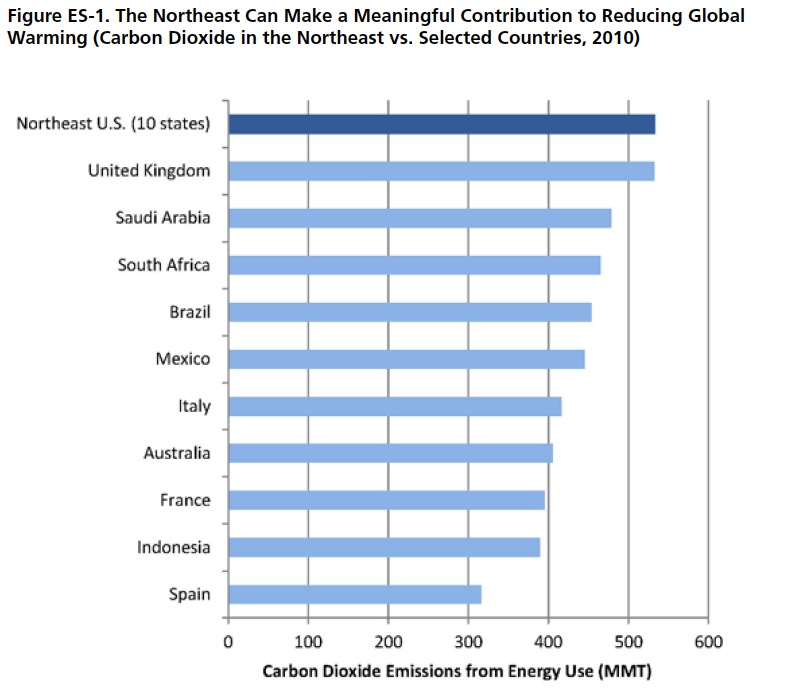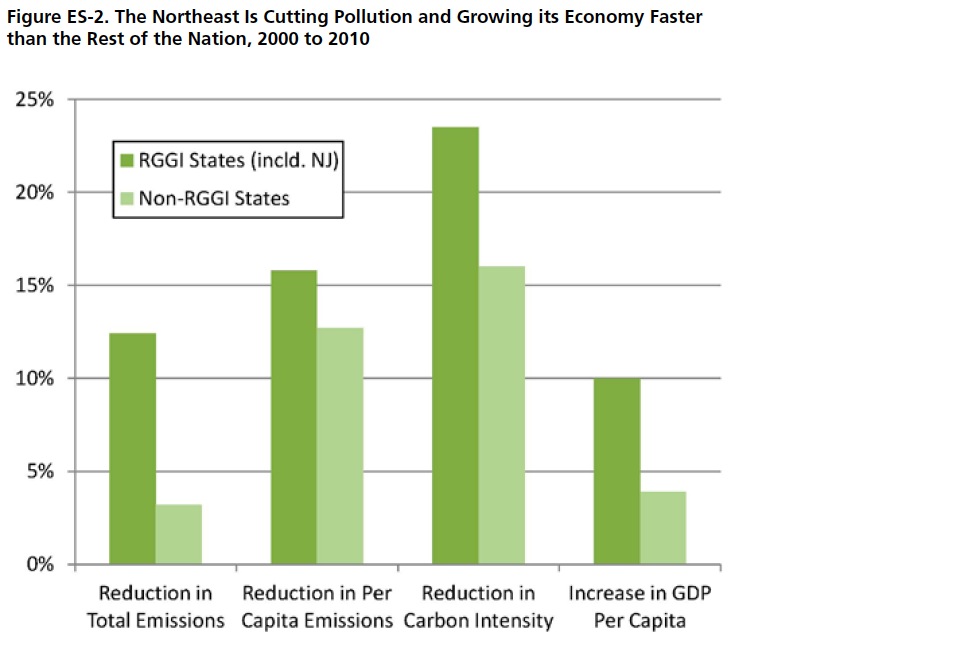ENVIRONMENT AMERICA
Executive Summary
 The Regional Greenhouse Gas Initiative (RGGI) is a central strategy in the Northeastern states’ efforts to protect the region from global warming. The program, which took effect in 2009, has succeeded in cutting carbon dioxide emissions and demonstrating the effectiveness of cap-and-trade as a global warming solution while helping to sustain a growing regional economy.
The Regional Greenhouse Gas Initiative (RGGI) is a central strategy in the Northeastern states’ efforts to protect the region from global warming. The program, which took effect in 2009, has succeeded in cutting carbon dioxide emissions and demonstrating the effectiveness of cap-and-trade as a global warming solution while helping to sustain a growing regional economy.
Now, nine Northeastern states are considering strengthening RGGI to drive additional reductions in global warming pollution. Strengthening RGGI would be a “win-win” for the Northeast, making an important contribution toward protecting the region from global warming while speeding the transition to a clean energy future.
RGGI helps to address the threat of global warming to the Northeast.
- Hurricane Irene in 2011 and Hurricane Sandy in 2012 demonstrated that the Northeast has much to lose from global warming. Hurricane Irene was responsible for 45 deaths and more than $6.5 billion in damage, while Hurricane Sandy was responsible for 72 deaths in the Northeast and Mid- Atlantic. The storm caused $65 billion in damage in the U.S. and other affected countries. Should current emission trends continue, scientists anticipate that the Northeast will be vulnerable to more extreme storms, rising seas, higher temperatures and other threats from global warming.
- The Northeast can make a meaningful contribution to reducing the impacts of global warming. In 2010, the 10 Northeastern states then participating in RGGI emitted 533 million metric tons (MMT) of carbon dioxide pollution from energy use. Were the Northeast its own country, its emissions would rank 10th in the world, ahead of the United Kingdom, Saudi Arabia, Mexico, Brazil and France. (See Figure ES-1.)
- RGGI is already reducing global warming pollution. Clean energy investments driven by RGGI through 2011 are expected to reduce global warming pollution by 12 million tons A Double Success over their lifetimes, the equivalent of taking 2 million cars off the road for a year.
- Strengthening RGGI would cut emissions further, avoiding 86 to 91 million tons of carbon dioxide pollution (78 million to 83 million metric tons) between 2013 and 2020 according to an analysis conducted by RGGI, Inc. That is the equivalent annual emissions from 16 million cars. Re-investment of RGGI allowance auction revenues in programs to reduce direct consumption of fossil fuels would lead to further emission reductions.
- RGGI provides an effective model that can be adopted by other states and regions and eventually expanded to other sectors of the economy. In the last year, the state of California and the Canadian province of Quebec have both implemented cap-and-trade programs.
RGGI is good for the Northeast’s economic future.
- Global warming threatens public welfare and the Northeast’s economy. More than $2 trillion of private property and public infrastructure could be exposed to damage in the Baltimore, Boston, New York-Newark, Philadelphia and Providence areas in the event of a 0.65 meter (2.1 foot) increase in sea level by 2050.
- RGGI helps reduce the region’s dependence on fossil fuels. The Northeast spent nearly $130 billion in 2010 on fossil fuels, 98.5 percent of which were imported from outside the region. RGGI helps drive investments in energy efficiency measures and homegrown renewable energy sources that keep money and jobs in the Northeast.
- Reducing global warming pollution goes hand in hand with growing the economy. Between 2000 and 2010, the economies of the RGGI states grew twice as fast per capita as non-RGGI states while cutting carbon dioxide pollution 25 percent faster per capita. (See Figure ES-2.)
- RGGI has produced a $1.6 billion economic boost (net present value) to the region through 2011, according to a study by Analysis Group. Strengthening RGGI would produce an additional $8 billion in economic benefits, along with 124,800 additional jobyears of employment, according to a recent analysis by Northeast States for Coordinated Air Use Management.
To protect the Northeast against the worst impacts of global warming and to continue to move the region toward a clean energy economy, Northeastern states should do the following:
- Adopt the emission reductions proposed by the RGGI states in February 2013, limiting emissions to no greater than 91 million tons per year starting in 2014, with additional 2.5 percent annual emission reductions between 2015 and 2020. This would ensure significant emission reductions from current levels.
- Convince New Jersey to re-join the program, which would help the state lessen the dangers posed by increasingly severe storms and rising sea level while bolstering the state’s economy.
- Establish limits on global warming pollution that go beyond the electricity sector, including for transportation and heating fuels. This could include expanding RGGI to other sectors.
- Implement the laws providing for economy-wide limits on global warming pollution in Maryland, New Jersey, Connecticut and Massachusetts.
- Lay the groundwork for expanding RGGI to other states.
- Encourage the U.S. Environmental Protection Agency to move forward with regulating global warming pollution from existing power plants in all states.
Download full report (PDF): A Double Success
About Environment America
www.environmentamerica.org
“Environment America is a federation of state-based, citizen-funded environmental advocacy organizations. Our professional staff in 28 states and Washington, D.C., combines independent research, practical ideas and tough-minded advocacy to overcome the opposition of powerful special interests and win real results for the environment. Environment America draws on 30 years of success in tackling environmental problems.”
Tags: Environment America, Regional Greenhouse Gas Initiative, RGGI








 RSS Feed
RSS Feed